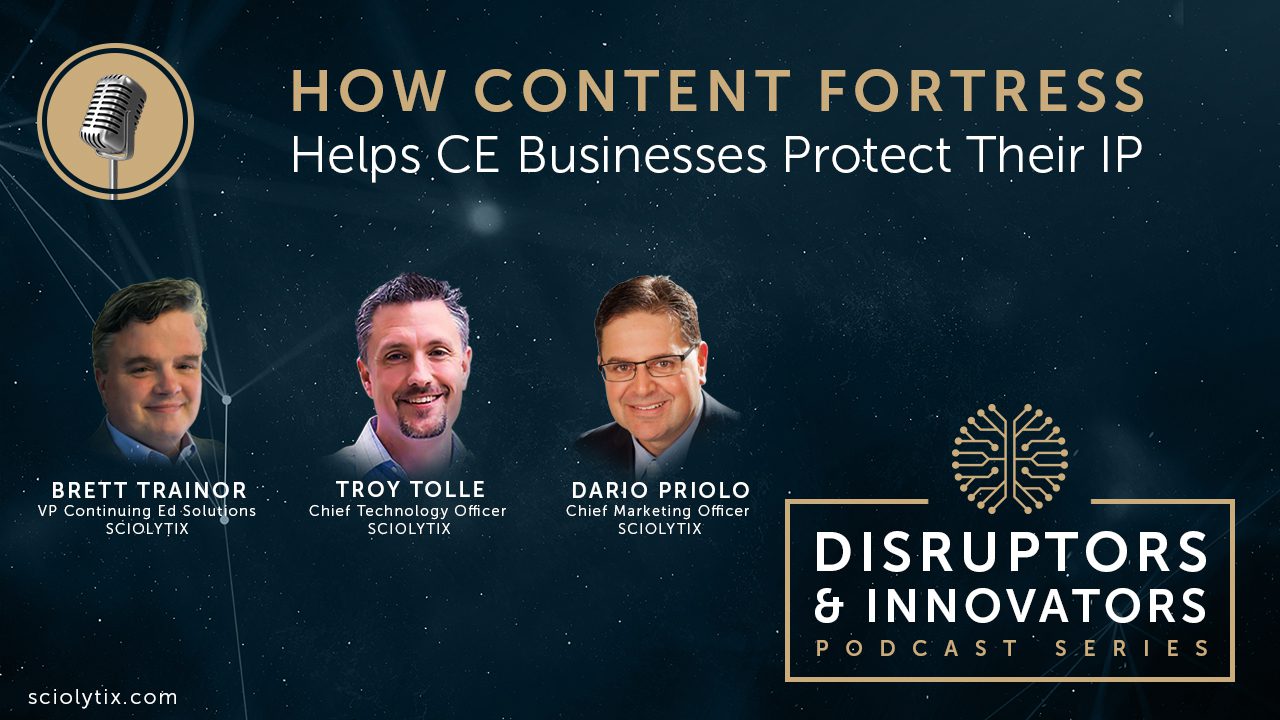Imagine for a second that you’re a continuing education business leader, and you have a list of prospective users a mile long waiting to purchase your courses. You’re supposed to be happy about this influx of business, and yet, you’re worried about the ramifications of selling it to larger companies who don’t use the same learning management system (LMS).
We can’t blame you. At the end of the day, this is your intellectual property. It’s the culmination of all the expertise and experience you’ve gained and packaged over many years. At least if they were using the same LMS, you could monitor it.
But they’re not. As a result, you feel like you are simply handing it over to someone else and losing control.
A million questions race through your mind:
- How many users have taken the course?
- Did they finish taking the course?
- How can I properly manage this and maintain control?
- Who are they delivering the training to, and how many times?
- Are they successful in delivering the material?
- Am I losing revenue on this deal?
This is information that you want and need to know as the content provider to maintain better control over your business.
Protecting Your IP Is Critical!
At Sciolytix, we devote our time to serving continuing education clients and professional training companies just like you whose goal is to sell their course content to other users. And yet, doing so while also protecting their IP is a huge challenge — especially when you factor in the way the market has changed and that organizations want flexibility in terms of how they consume your content.
So it’s not uncommon for us to receive a call from a client who says,
“Hey, listen. I’ve got this hospital system that I need to train, and they have 500-1,000
folks who need to take the course. But they want to take the course on their own LMS. How
do I make sure my content is protected and up-to-date and doesn’t just hang around out there for two or three years being used by a countless number of people?”
This is the biggest reason we created Content Fortress — so that companies can sell their training courses to small, medium, and large organizations and maintain control over their intellectual property regardless of the LMS their client prefers to use. For example, our preferred LMS tool is DigitalChalk. Many of our clients are perfectly happy using that LMS, though others are not. And several of our clients came to us with very similar concerns: they loved deploying their content on DigitalChalk, but one of their customers insisted on using their own LMS to track it internally (Cornerstone, Saba, etc.).
They didn’t want to lose control, and neither did we. But rather than say no, we looked at the situation as an opportunity to be entrepreneurial and solutions-minded.
And Content Fortress Was Born
Troy Tolle and Brett Trainor talked about this in more detail during a recent Disruptors and Innovators podcast. With Content Fortress, you create courses in your preferred tool (example, Articulate) and package it as a SCORM or AICC file. You then upload the package into Content Fortress and create a license for your customer. Your customer then uploads the license into their LMS to deliver it to their learners.
You can still track it the same way you would within your preferred LMS and see all the data that matters:
- How many times the content is being used
- Where it’s being used
- When it was launched
- When it was completed
- Whether or not you need to cap the number of licenses for each customer
- And more …
Even if you need to update the training content, you can go to Content Fortress, create a new version with that content, publish it, and activate it. As soon as you hit publish and activate, that new content is delivered to every future learner without the need for hundreds of emails going back and forth to ensure they’ve got the right version.
The bottom line is that you are in complete control with Content Fortress! More importantly, you become a more valuable partner in the eyes of your clients, who now see you as solution-finders rather than someone who isn’t innovative enough to meet their ever-changing needs.
